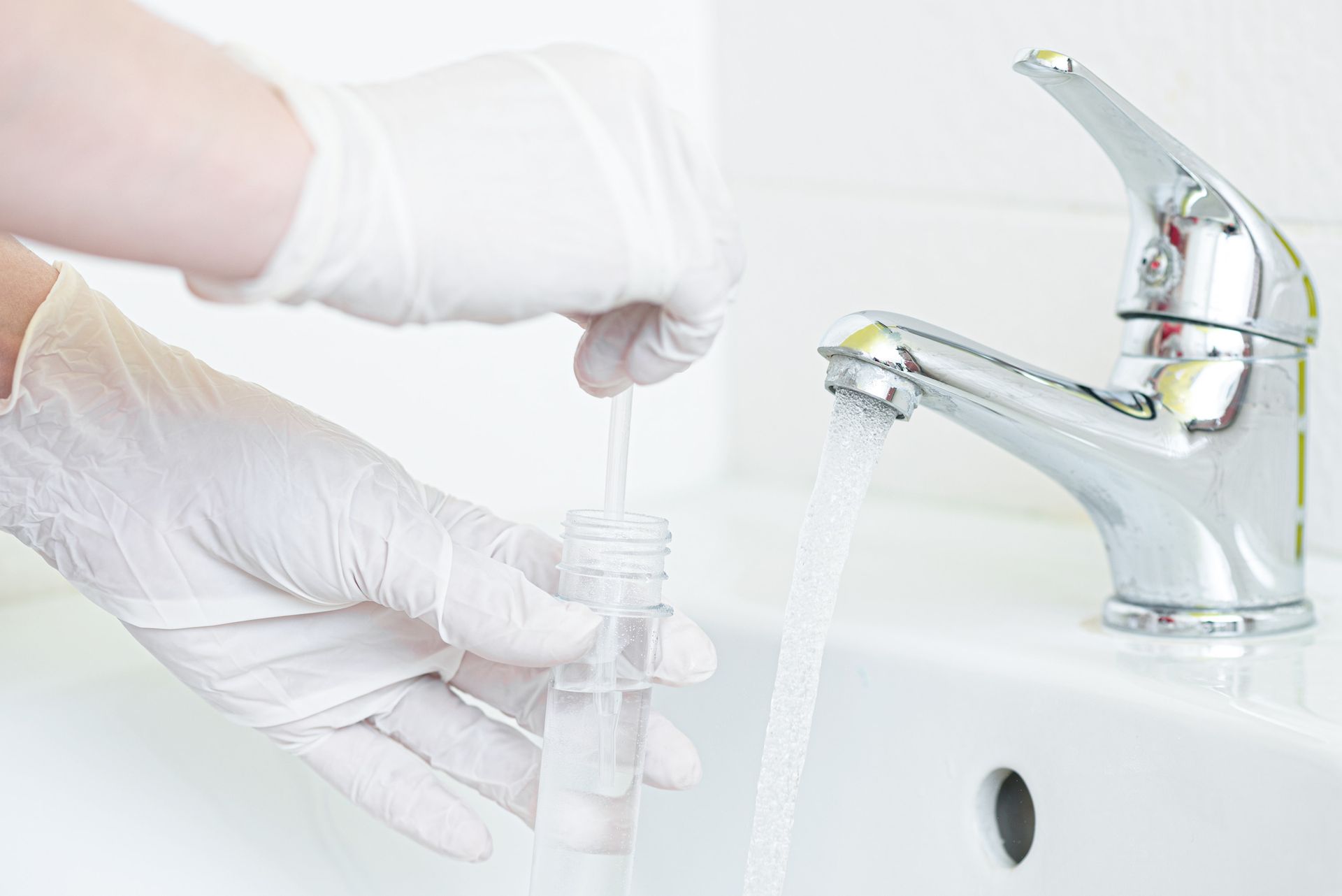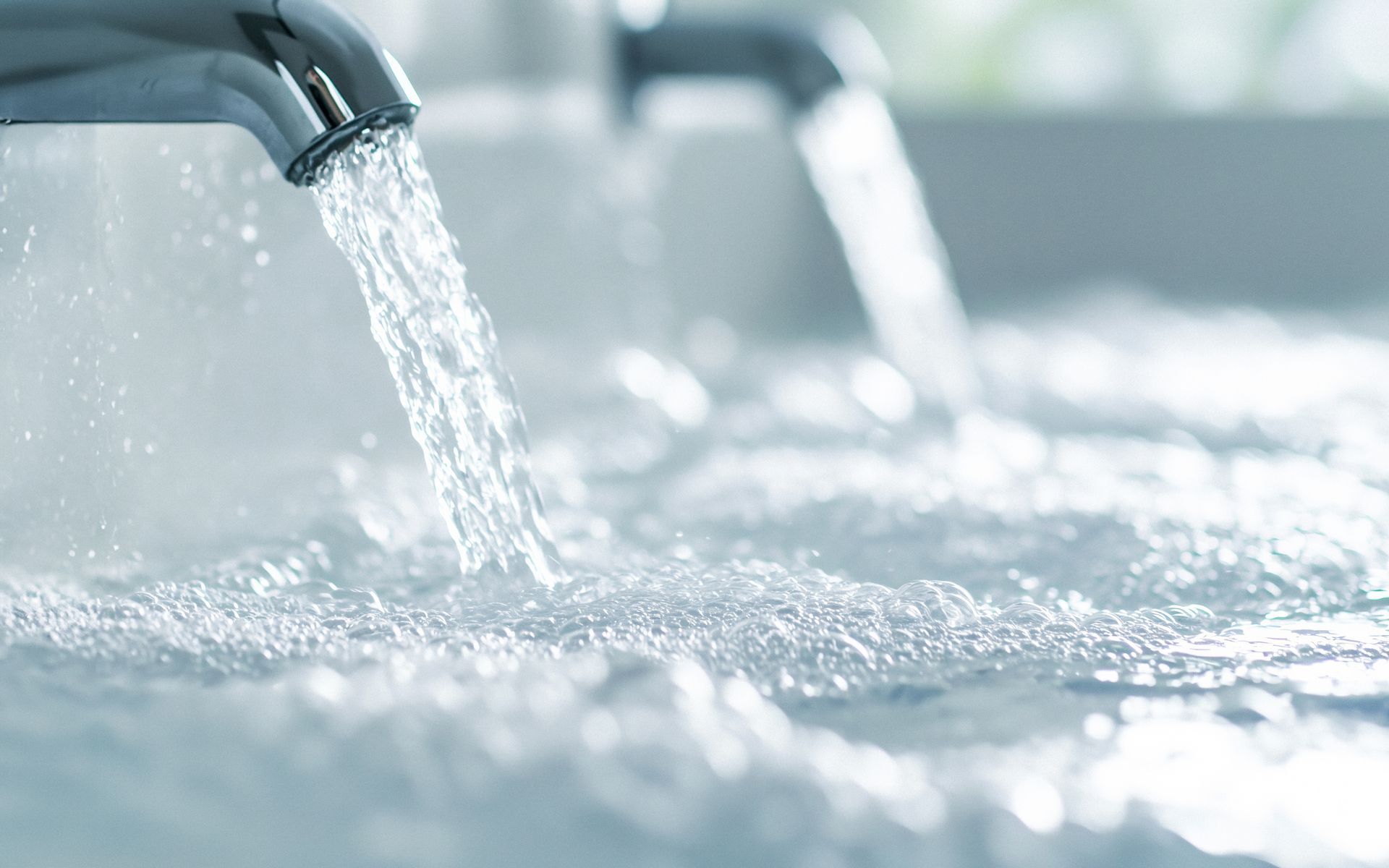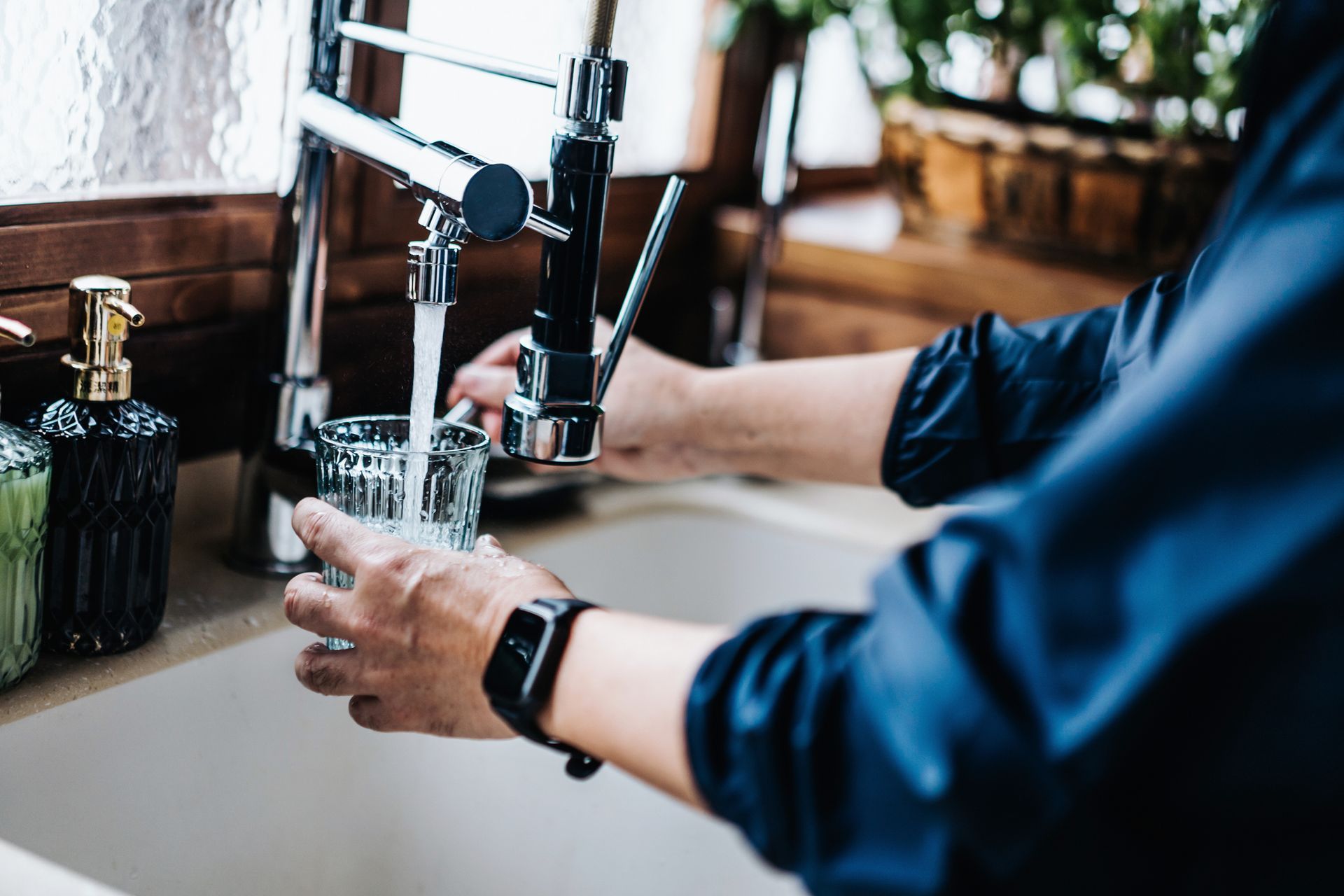Essential Steps to Address Coliform Well Water Contamination
Discovering coliform bacteria in your well water raises serious questions about water safety. In this guide, learn what coliform well water means, the health risks involved, and how to test and treat your water to ensure it’s safe.
Key Takeaways
- Coliform bacteria in well water indicate potential contamination, with E. coli posing significant health risks and signaling fecal pollution.
- Regular testing for coliform bacteria is crucial, with ideal frequency being at least once a year, especially after heavy rainfall or previous contamination incidents.
- Immediate action, such as shock chlorination and professional assessment, is necessary after positive coliform test results to ensure safe drinking water and prevent future contamination.

Understanding Coliform Bacteria
Coliform bacteria are ubiquitous microorganisms found in the intestines of humans and warm-blooded animals, as well as in soil, plants, and water. While the presence of coliform bacteria in your well water is not necessarily harmful, it serves as an indicator that other potentially dangerous bacteria may be present. These bacteria often enter well water through sources such as animal waste, runoff, or faulty well construction.
A positive coliform test signals compromised water quality, necessitating immediate action to identify and eliminate the contamination source. Knowing the types of coliform bacteria and their origins aids in taking appropriate safety measures for your water supply.
Types of Coliform Bacteria
Coliform bacteria are categorized into three main groups:
- Total coliform bacteria, which are generally harmless and can be found in the environment
- Fecal coliforms, which are associated with fecal contamination
- E. coli (Escherichia coli), which can indicate the presence of harmful pathogens
The presence of total coliform bacteria in drinking water indicates that the water supply might be contaminated with pathogens.
Fecal coliforms, a subset of total coliform bacteria, are found in the intestines of warm-blooded animals and are a strong indicator of fecal contamination. The most concerning type is E. coli, which specifically indicates contamination with fecal matter and poses a significant health risk.
Sources of Contamination
Coliform bacteria can infiltrate well water from various sources. Common contributors include:
- Animal waste
- Runoff from feedlots
- Pastures
- Human waste
- Malfunctioning septic systems
When well water tested positive for fecal coliforms, it indicates that the water has come into contact with human or animal waste.
Other factors that increase the risk of contamination include shallow wells, poorly constructed wells, and wells located near surface water bodies, which may harbor surface contaminants. Regular maintenance and proper well construction are crucial steps in preventing bacterial contamination from these sources.
Health Risks Associated with Coliform Bacteria
The presence of coliform bacteria in your well water is a serious concern because it indicates the potential presence of harmful pathogens. These pathogens can cause a range of water-borne illnesses, particularly if the contamination includes fecal coliforms or E. coli. These bacteria come from the same sources as disease-causing microorganisms and can significantly impact your health.
Consuming water contaminated with E. coli and fecal coliforms can lead to severe gastrointestinal illnesses, including dysentery, hepatitis, and giardiasis. Vulnerable populations, such as children and the elderly, are particularly at risk. Even healthy adults are advised to avoid using contaminated water for drinking or cooking until the issue is resolved.
Symptoms of Waterborne Illness
Waterborne pathogens can cause a variety of gastrointestinal symptoms, including diarrhea and vomiting. If you or your family experience these symptoms and have recently consumed well water, it’s crucial to get your water tested for coliform bacteria.
These symptoms often signal early stages of waterborne illness, and early detection can prevent more serious health issues.
Long-term Health Implications
Long-term exposure to contaminated water can lead to chronic health problems. Drinking water contaminated with coliform bacteria can cause severe dehydration and other complications. In some cases, E. coli infections can result in hospitalization and even life-threatening conditions like hemolytic uremic syndrome, which can cause kidney failure.
Vulnerable groups, including children and the elderly, are especially susceptible to these long-term health effects.

Testing for Coliform Bacteria
Testing your well water for coliform bacteria ensures its safety. Private well owners are advised to use a presence/absence (P/A) total coliform test, which effectively indicates potential contamination by revealing the presence of coliform bacteria.
Regular testing is crucial for maintaining water quality and public health. By routinely testing your well water, you can detect contamination early and take corrective actions before health risks escalate.
When and How Often to Test
It is recommended to test well water for coliform bacteria at least once a year. The best time to conduct these tests is in late spring or early summer when the risk of contamination is higher due to increased rainfall and runoff.
If you have experienced bacterial contamination in the past, more frequent testing is advisable.
Collecting Water Samples
To ensure accurate results, water samples for coliform testing must be collected in sterilized containers following specific laboratory instructions. This process helps avoid any external contamination that could skew the test results.
Proper sample collection is a critical step in determining the true quality of your drinking water.
Interpreting Test Results
A positive total coliform test indicates that your well water is polluted and that there is a possibility of harmful bacteria being present. This result suggests that you need to take immediate action to identify and eliminate the source of contamination. It is important to understand what your test results mean to take the appropriate corrective measures.
If your water tests positive for total coliform bacteria, further testing for fecal coliforms or E. coli is advisable. These follow-up tests can pinpoint the specific type of contamination and its severity.
Positive Total Coliform Test
A positive total coliform test strongly indicates bacterial contamination, often stemming from defective wells or agricultural runoff. In case of a positive result, boil your water or use alternative sources until the contamination is confirmed eliminated.
Retesting the water for fecal coliform or E. coli is also advisable to ensure comprehensive safety.
Confirmatory Testing for Fecal Coliform and E. coli
Confirmatory tests for fecal coliform and E. coli are crucial after a positive total coliform test. Their presence indicates fecal pollution and significant health risks, helping determine whether the contamination comes from human or animal waste and guiding necessary remediation steps.
Addressing Contamination
If your well water tests positive for coliform bacteria, immediate steps are required to address the issue. The first recommended action is to perform shock chlorination, a method that involves adding a high concentration of chlorine to the well to kill the bacteria. This treatment should be followed by retesting the water to confirm the contamination has been eliminated.
Alongside shock chlorination, repairs or modifications to your water system may be necessary to prevent future contamination. Until the well is properly disinfected and retested, boiling water or using alternative sources is advisable.
Shock Chlorination
Shock chlorination is an effective method for disinfecting a well contaminated by coliform bacteria. The process involves adding a high concentration of chlorine to the well, circulating the water, and then flushing out the chlorine after a designated period. This method is crucial for eliminating bacterial contamination and improving water safety.
After shock chlorination, retesting your water ensures the bacteria are completely eradicated, confirming the disinfection’s success and ensuring the water is safe for consumption.
Long-term Solutions
For long-term management of coliform bacteria in well water, continuous treatment options like ultraviolet (UV) disinfection and continuous chlorination are effective. UV disinfection neutralizes harmful microorganisms without using chemicals, making it a safe and sustainable solution.
These treatments help maintain water quality over time and prevent future contamination issues.
Preventing Future Contamination
Preventing future coliform contamination is essential for ensuring safe drinking water. The first step is to identify and rectify the source of contamination. Common entry points for coliform bacteria include defective well caps and compromised casings, which allow outside contaminants to infiltrate the well. Regular maintenance and proper construction of well components are crucial in preventing these issues.
Installing point-of-entry systems can also help treat all water entering your home, ensuring that water from any tap is safe for consumption. These systems act as an additional safeguard against potential contaminants, functioning as a water treatment system.
Well Maintenance
Regularly checking and maintaining well components reduces the risk of coliform contamination. Faulty seals, improper construction, and poor wellhead conditions can all contribute to contamination issues.
Wragg Brothers offers maintenance services to ensure the long-term safety and efficiency of your water well, including annual disinfection.
Managing Nearby Contaminant Sources
Managing activities near your well is crucial for safeguarding your water supply. Relocating sources of animal waste and ensuring septic tanks are at least 50 feet away can significantly reduce contamination risks.
Regularly inspecting the area around the well for standing water and other signs of contamination can help identify and address issues early.

Working with Professionals
If coliform contamination persists despite regular testing and treatment efforts, it is time to seek professional help. Professionals can provide a thorough evaluation of your well and identify the root cause of the contamination. Wragg Brothers Well Drilling offers a range of services, including well drilling, hydrofracking, and comprehensive water treatment solutions to address contamination issues.
With over 65 years of experience, their expertise guarantees high-quality service and effective solutions for your well water problems. Wragg Bros. offers comprehensive services, from drilling new wells to treating existing ones, ensuring a safe and reliable water supply.
When to Call a Professional
Certain signs in your well water indicate the need for professional intervention. Here are some indicators to watch for:
- Visible particles
- Oily appearances
- Unusual odors like rotten eggs or chlorine
- Brown, red, or green stains in sinks and appliances
These signs suggest contamination issues that require expert assessment.
When these signs appear, calling licensed professionals to evaluate and address the situation is crucial.
Services Offered by Wragg Brothers Well Drilling
Wragg Brothers Well Drilling provides a variety of services tailored to address specific contamination issues. Their offerings include well drilling, hydrofracking, and specialized water treatment solutions. Hydrofracking is aimed at restoring water flow to tired wells, while water conditioning services focus on improving water quality by removing harmful minerals.
With over 65 years of experience, Wragg Bros. ensures a safe and reliable water supply for private well owners.
Summary
Ensuring the safety of your well water is a multifaceted process that requires understanding the nature of coliform bacteria, recognizing the health risks they pose, and being vigilant with testing and maintenance. By following proper testing protocols, interpreting results accurately, and taking decisive actions to address and prevent contamination, you can maintain a safe water supply. When in doubt, seeking professional assistance from experienced providers like Wragg Brothers Well Drilling can provide peace of mind and ensure the health of your household. Stay proactive, stay informed, and keep your water safe.
Frequently Asked Questions
How often should I test my well water for coliform bacteria?
You should test your well water for coliform bacteria at least once a year, ideally during late spring or early summer. Regular testing ensures the safety and quality of your water supply.
What should I do if my water tests positive for coliform bacteria?
If your water tests positive for coliform bacteria, it is imperative to boil the water or use alternative sources until the issue is resolved. Additionally, shock chlorination is recommended as an effective initial treatment method.
What are the long-term health risks of drinking contaminated water?
Drinking contaminated water poses significant long-term health risks, including chronic gastrointestinal disorders and serious infections. This underscores the importance of ensuring access to clean water for overall health and well-being.
When should I call a professional for my well water issues?
You should call a professional for your well water issues if you observe visible particles, oily appearances, unusual odors, or stains, as these are signs of potential contamination that require expert assessment.
What services does Wragg Brothers Well Drilling offer to address coliform contamination?
Wragg Brothers Well Drilling provides well drilling, hydrofracking, water conditioning, and specialized water treatment solutions to effectively tackle coliform contamination. These services ensure safe and clean water access for clients.


